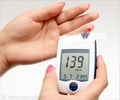Identifying those at risk for diabetes is important because lifestyle changes and medication can prevent or delay the onset of the disease. Currently
Identifying those at risk for diabetes is important because lifestyle changes and medication can prevent or delay the onset of the disease. Currently an oral glucose tolerance test is used to identify high-risk individuals for diabetes, but the test is costly and inconvenient. A new study finds a cluster of risk factors known as metabolic syndrome is able to predict type 2 diabetes independently of other risk factors.
Metabolic syndrome has been shown to lead to the development of cardiovascular and coronary heart disease. Metabolic syndrome includes looking at factors such as weight, cholesterol, glucose and blood pressure. Metabolic syndrome has two different definitions including one by the National Cholesterol Education Program and a second one from the World Health Organization. Researchers conducted a study to compare the NCEP definition of metabolic syndrome, the WHO definition of metabolic syndrome, and the impaired glucose tolerance test as predictors for type 2 diabetes.The study included 1,743 participants who were followed for seven to eight years. Looking at the different risk factors, researchers determined which approach was a better predictor of type 2 diabetes.
Researchers say the impaired glucose tolerance and the NCEP definition had higher sensitivity than the modified WHO definition. The study also found combining the impaired glucose tolerance test and NCEP definition increased sensitivity to 70 percent. They also report the risk for incidence of type 2 diabetes using the NCEP definition was independent of other risk factors. They say by changing the fasting glucose level, the NCEP performed better at predicting type 2 diabetes.
Researchers conclude the NCEP definition of metabolic syndrome is a strong predictor of type 2 diabetes. The NCEP definition includes at least three of the following factors: increased waist circumference, high triglycerides, low HDL cholesterol, high blood pressure and fasting glucose.











